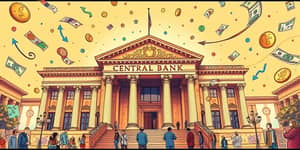
In today’s interconnected world, moves in the forex market can ripple through every aspect of our lives. From the price of a cup of coffee imported from abroad to the cost of an international vacation, exchange rates shape our personal and professional decisions.
The foreign exchange market, often called Forex or FX, is where currencies are bought and sold. It stands as the largest financial market globally, with an average daily trading volume of over $1.165 trillion. Operating around the clock across major hubs like London, New York, Tokyo, Singapore, and Hong Kong, the FX market determines the daily rates for major pairs such as USD/EUR, USD/JPY, and EUR/GBP.
Currencies trade in micro lots (1,000 units), mini lots (10,000 units), and standard lots (100,000 units), catering to a diverse set of traders. The rates quoted, such as 1.2569 for USD/CAD, show how much CAD is needed to buy one USD. These values fluctuate constantly in response to a complex interplay of economics, politics, and market sentiment.
Understanding why currencies rise or fall is essential for anyone participating in global trade, travel, or investment. Several major factors shape these movements:
These factors don’t operate in isolation. Central bank policies, market speculation, and even trade disputes can amplify each other, creating periods of heightened volatility or unexpected stability.
For consumers and businesses alike, exchange rate swings have tangible consequences. A stronger domestic currency makes imports cheaper, benefiting individuals purchasing electronics, clothing, or raw materials. Conversely, exporters may find their goods less competitive abroad.
Travelers and those sending remittances also feel the impact directly. A weak home currency means fewer units of the destination currency for the same amount spent, increasing travel costs or reducing the value of money sent to family members overseas.
The period spanning 2024 and into 2025 has been marked by several noteworthy themes:
The US dollar has enjoyed exceptionally strong demand in global markets, buoyed by expectations of a delayed rate cut cycle. In contrast, both the European Central Bank and the Bank of Japan have signaled a pivot toward easier policy, pressuring the euro and yen lower.
Emerging market currencies have faced headwinds from sluggish growth in China—an economy that remains a critical export destination for many nations. The result is renewed emphasis on volatility strategies such as straddles and swaps, enabling traders to hedge potential swings.
Most advanced economies operate under a floating exchange rate system, where supply and demand dictate currency values. Others, like some developing nations, maintain fixed or managed floats, stepping in to buy or sell their currency to maintain a target range.
At the heart of this ecosystem are global banks—such as JPMorgan Chase, Deutsche Bank, HSBC, and Citigroup—which provide liquidity, execute large orders, and offer research to clients. Retail traders, multinational corporations, hedge funds, and central banks comprise the broader cast of characters in this ever-evolving stage.
Navigating FX volatility requires careful planning and adaptable tactics. Consider these practical approaches:
For businesses, integrating FX risk management into treasury operations can protect profit margins and streamline budgeting. Review trade tariffs, geopolitical developments, and central bank minutes to inform hedging decisions and contract terms.
The rise of digital trading platforms and AI-driven analytics and digital trading platforms has transformed the FX landscape. Real-time data feeds, algorithmic strategies, and automated risk checks empower participants to react swiftly to market shifts.
Moreover, growing urbanization and digitalization foster 24/7 trading availability, ensuring that liquidity remains deep even outside traditional business hours. As technology evolves, traders will benefit from enhanced decision-support tools, real-time sentiment analysis, and seamless execution.
While uncertainty is an inherent feature of the forex market, informed participants can harness its dynamics for growth and stability. By recognizing the central drivers of currency movements, adopting prudent hedging strategies, and leveraging cutting-edge technology, both traders and businesses can turn volatility into opportunity.
Whether you’re an individual traveler, a corporate treasurer, or an active FX trader, understanding the mechanics and influences behind exchange rate fluctuations is your first step toward navigating the global marketplace with conviction. Embrace these insights, stay agile, and let the currents of the forex market work in your favor.
References













